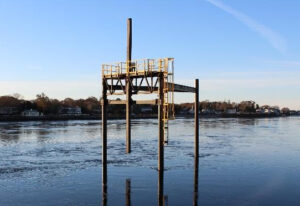That old familiar chill is back in the air, and you’re probably wondering when it will be time to turn that heat on, if you haven’t already. If you have a fireplace in your home, however, you can hold off turning up the thermostat for just a little while longer.
In fact, not having a fireplace will reflect on your energy bill in a big way. Heating your home can be expensive, but if you have a functioning and maintained fireplace and chimney, you’ll notice you’re paying significantly less on your energy bill.
There are many styles of fireplaces and all come with their own set of pros and cons. They’re fueled by different resources – wood, wood pellets, or gas – and they can be as ornate or as simple as your taste requires.
Wood-burning fireplaces come with a lot of benefits. To name a few, they create a focal point in the room, the smell of wood burning is an appealing scent to many, they create a romantic atmosphere, and they’re environmentally friendly. They can still provide warmth when the power goes out, and buying wood for your fireplace is less expensive than gas or oil heat.
As a drawback, they need to constantly be watched and regularly fed wood logs. If not, the fire will go out. Additionally, a wood-burning fireplace can be messy, full of soot and ash, and it will have to be cleaned on a regular basis, depending on how much you use it. You will also need to have your chimney cleaned and inspected regularly. You’ll need to keep your supply of wood dry if you want any flame. Otherwise, all you’ll get is smoke and, if your flu isn’t open enough, the house can fill with smoke, which is dangerous.
There are also wood stoves and pellet stoves, which use wood logs or wood pellets as fuel. These stoves come as inserts or as stand-alone models. (Wood pellets should not be used in an in-wall, wood-burning fireplace.) While a wood stove’s burn must be maintained to keep the heat constant, a pellet stove operates when the hopper is full of pellets, and the stove can be thermostatically controlled.
When it comes to storing and carrying firewood and pellets to the stove, there are also major differences. Firewood is usually stored outside, covered or not, and can be carried inside in smaller batches if necessary to make the process easier. Pellets, usually made from recycled wood waste, must be kept in a dry place such as a shed, garage, or a room in the house.
One of the biggest benefits of having a gas fireplace is its ease of use. You merely flip a switch. Most gas fireplaces turn on this way, while others have built-in thermostats, turning on and off automatically to maintain a set temperature in the room. When you’re done using the fireplace, simply flip the switch back off and go about your day. There’s nothing to clean and no waiting for the fire to go out before heading to bed.
Gas fireplaces do have their own set of drawbacks. With gas fireplaces, there is no crackle of burning logs. There’s no fire to stoke, and no burning-wood smell. So, it does take away from the ambiance of a real wood fire. Also, many gas fireplaces are plagued with blue flames, removing them just a bit more from the “real” experience.
One thing that can be agreed upon is that a fireplace adds to the value of your home, particularly here in the Northeast, where the temperature can easily dip to absolutely frigid. Having a fireplace to keep you warm when the power goes out can be a lifeline. If you don’t already have one, consider having one installed. Winter will soon be upon us.
No other feature in a home can provide you with the kind of comfort and cozy warmth that a fireplace can. Whether it is a wood stove, a stand-alone stove, an open hearth, or any other structure, it is one of those conveniences that may not be fully necessary, but is certainly one we’d love to have in our homes.
By CapeCod.com Staff






















